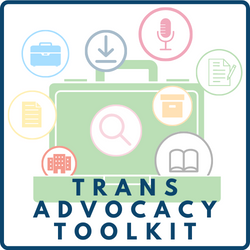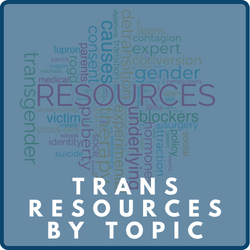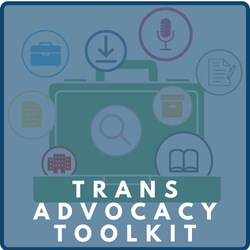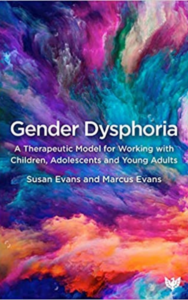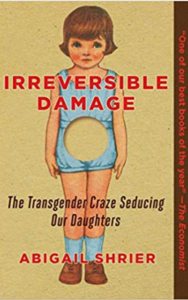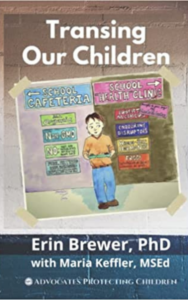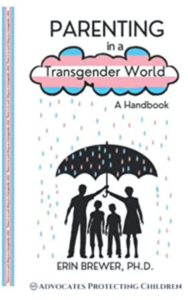UNDERSTANDING TRANSGENDER ISSUES
Resources by Topic
PUBERTY BLOCKERS | CROSS-SEX HORMONES | SURGERY | CONSENT | POTENTIAL CAUSES | ROGD | SUICIDE | SOCIAL TRANSITION | MEDICAL TRANSITION | SOCIAL CONTAGION | PARENTAL RIGHTS | POLICIES | EXPERIMENTATION | LEGISLATION | SOGI | WOMEN’S SPORTS | PUBLIC ACCOMMODATIONS | BIRTH CERTIFICATES | INTERSEX/DSD | COMPELLED SPEECH | AFFIRMATION | GENDER DYSPHORIA | DESISTERS/DETRANSITIONERS | THERAPY BANS
Desisters / Detransitioners
Books
Videos
The Boyce of Reason
Commonsense Care
Dysphoric
My experience with PLANNED PARENTHOOD
Puberty blockers: Under-16s ‘unlikely’ to be able to give informed consent
Puberty blockers: ‘We need facts and evidence, not ideology’
Utah House Judiciary Committee Hearing Highlights on HB 399
Erin Brewer, ATI 2021, Her Story
Heyer – ATI 2021
Former Transgender Asks Senators Not to Ban Counselling That Helped Her Change:
Michelle Cretella
Organizations
Guides
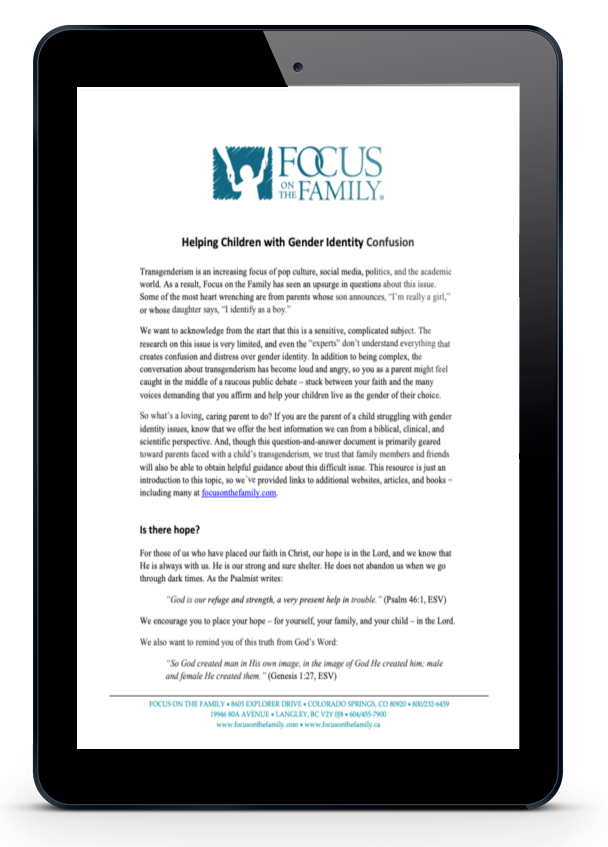
Healing Children with Gender Dysphoria
Download
Research
Do trans- kids stay trans- when they grow up?
In total, there have been three large scale follow-up studies and a handful of smaller ones. I have listed all of them below, together with their results. (In the table, “cis-” means non-transsexual.) Despite the differences in country, culture, decade, and follow-up length and method, all the studies have come to a remarkably similar conclusion: Only very few trans- kids still want to transition by the time they are adults. Instead, they generally turn out to be regular gay or lesbian folks. The exact number varies by study, but roughly 60–90% of trans- kids turn out no longer to be trans by adulthood.
Epidemiology of gender dysphoria and transgender identity
This review provides an update on the epidemiology of gender dysphoria and transgender identity in children, adolescents and adults.
Temple Newhook et al. (2018) provide a critique of recent follow-up studies of children referred to specialized gender identity clinics, organized around rates of persistence and desistance. The critical gaze of Temple Newhook et al. examined three primary issues: (1) the terms persistence and desistance in their own right; (2) methodology of the follow-up studies and interpretation of the data; and (3) ethical matters. In this response, I interrogate the critique of Temple Newhook et al. (2018).
Adolescents with Gender Dysphoria: Reflections on Some Contemporary Clinical and Research Issues
This article provides an overview of five contemporary clinical and research issues pertaining to adolescents with a diagnosis of gender dysphoria: (1) increased referrals to specialized gender identity clinics; (2) alteration in the sex ratio; (3) suicidality; (4) “rapid-onset gender dysphoria” (ROGD) as a new developmental pathway; (5) and best practice clinical care for adolescents who may have ROGD.
Debate: Different strokes for different folks
A gender social transition in prepubertal children is a form of psychosocial treatment that aims to reduce gender dysphoria, but with the likely consequence of subsequent (lifelong) biomedical treatments as well (gender-affirming hormonal treatment and surgery).
Prevalence studies conclude that fewer than 1 in 10,000 adult natal males and 1 in 30,000 adult natal females experience GD, but such estimates vary widely. GD in adults is associated with an elevated prevalence of comorbid psychopathology, especially mood disorders, anxiety disorders, and suicidality.
Objective This study assessed whether children clinically referred for gender dysphoria (GD) show symptoms that overlap with Autism Spectrum Disorder (ASD). Circumscribed preoccupations/intense interests and repetitive behaviors were considered as overlapping symptoms expressed in both GD and ASD.
The DSM-5 and the Politics of Diagnosing Transpeople
In the DSM-5, there has been a change in the diagnosis for transpeople of all ages from Gender Identity Disorder (GID) to Gender Dysphoria (GD), in part to better indicate the distress that transpeople may experience when their gender identity feels incongruent.
The treatment for transsexualism is sex reassignment, including hormonal treatment and surgery aimed at making the person’s body as congruent with the opposite sex as possible. There is a dearth of long term, follow-up studies after sex reassignment.
Detransition-Related Needs and Support: A Cross-Sectional Online Survey
The aim of this study is to analyze the specific needs of detransitioners from online detrans communities and discover to what extent they are being met.
Psychiatry’s ethical involvement in gender-affirming care
To reflect on the role of psychiatry in authorising physical treatments for Gender Dysphoria and to examine the quality of evidence for gender-reassignment.
One Size Does Not Fit All: In Support of Psychotherapy for Gender Dysphoria
We agree with Turban et al.’s (2020) position that therapies using coercive tactics to force a change in gender identity have no place in health care. We do, however, take issue with their problematic analysis and their flawed conclusions, which they use to justify the misguided notion that anything other than “affirmative” psychotherapy for gender dysphoria (GD) is harmful and should be banned.
A Typology of Gender Detransition and Its Implications for Healthcare Providers
Gender detransition is an emerging yet poorly understood phenomenon in our society. In the absence of research, clinicians and researchers have applied the concept of detransition differently, leading to inconsistencies in its use. The article suggests a typology of gender detransition based on the cessation or the continuation of a transgender identity to address this issue.
This prospective study examines the clinical characteristics of children (n = 79; 8.42–15.92 years old; 33 biological males and 46 biological females) presenting to a newly established, multidisciplinary Gender Service in New South Wales, Australia, and the challenges faced by the clinicians providing clinical services to these patients and their families.




